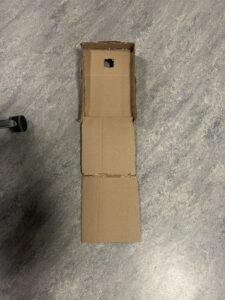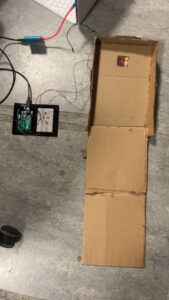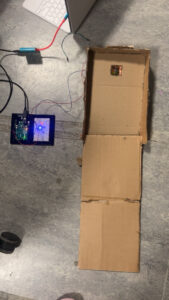Project Reflection
For this project, the goal was to create a creative switch using Arduino that could be activated with a body part other than the hand. At first, I wanted to make something you could blow on, kind of like a tiny football field made out of cardboard where you blow a ball to complete the circuit. But I quickly realized the ball I was using was too light, so it didn’t push the wires together properly.
After trying a few different ideas, I switched to a bigger marble. But since it was heavier, blowing on it didn’t work either. That’s when I got the idea to make it something more fun and active, something you kick instead of blow. It turned into more of a little game than just a switch, which made it a lot more exciting to work on.
In the final version, the goal is to kick the ball into a hole. When the ball lands perfectly in the hole, it completes the circuit and makes the bulbs light up. If you miss, the lights stay off. I really liked this idea because it feels like a reward, the light turning on means you “won.” It doesn’t happen automatically; you have to earn it.
What I enjoyed most about this project is how it started as a simple idea and ended up becoming something playful and interactive. It reminded me that creativity often comes from solving problems, sometimes when something doesn’t work, it actually pushes you toward a better idea. I also liked how it connected movement and technology. Using my foot instead of my hand made it feel more like a real-world challenge or game.
Design
The design of my project is a cardboard slope that works kind of like a mini golf game. At the end of the slope, there’s a hole made out of cardboard that acts as the main target. I covered the inside of the hole with copper tape because it’s a good conductor of electricity. Underneath, I made two small holes where I inserted the wires. These wires touch each other only when the ball goes into the hole, completing the circuit and lighting up the bulb. I really like how simple but effective it is when you kick the ball just right, the light turns on as a little celebration of success.















